An early attempt by an Overseer to hide Two by Twoism's origin
A paper which described the Two by Two history, doctrine and practice was written by by William M. Rule sometime between 1917 and 1924. The article gained further attention after it was published in the January 1924 edition of Our Hope magazine. Although the still-emerging Two by Two sect had been previously identified in the press outside of the British Isles, its activities had by then become widespread enough that the article allowed many more to make the link between the group described in the article and what they were seeing in their neighborhoods. In both the U.S. and Australia, the article was reprinted by Loizeaux Brothers and The Central Bible Truth Depot in the form of a tract, which then received wide distribution in North America and Australia. These tracts particularly attracted the attention of some Plymouth Brethren communities, among whom the Two by Twos had begun recruiting by this time. The article in Our Hope quickly came to the attention of John "Jack" Carroll (overseer of western North America), who alerted John Hardie (overseer of New South Wales) to its spread. The two overseers coordinated an attempt to force a retraction and cause the reprinted tract versions to be withdrawn.
Jack Carroll first wrote Arthur C. Gabelein, editor of Our Hope, asserting (after attempting to disassociate the sect from its "Cooneyite" label) that the article was wrong in over 20 statements, of which he provides details on 4 main points:
- Redemption without blood
Comment: Indeed, the "blood of the lamb" is mentioned by Two by Two workers, however infrequently, but what Mr. Carroll does not explain is that Two by Two doctrine (teaching) does not deem that the blood of Christ is sufficient on its own to produce salvation – there are other qualifications that Two by Twoism insists are necessary (hearing and professing through one of their workers, continuing faithfully in fellowship with them, striving to be worthy, etc.). - Sinners are set an impossible task to imitate Jesus
Comment: Certainly, the Two by Two workers do not normally teach that it is the task of "sinners" to imitate Jesus. However, Mr. Carroll does not go on to clarify that the sect enjoins professing friends – those who have heard the workers and indicated their acceptance of the gospel they preach – to both follow Jesus in becoming worthy. In addition, it is not the "place" of ordinary professing friends to follow Jesus's example ministry – that is reserved only for the Two by Two workers who have "forsaken all" to follow in his steps and becoming the "word made flesh" for today (as has been stated on several occasions). - Ignoring the work of the Holy Spirit
Comment: Mr. Carroll has a point as to the article's vague wording. However, and as his very brief response shows, the failure is more in the lack of defining what is meant by the term "Holy Spirit" than in the point being made. The usage and concept of the term "Spirit" in Two by Twoism can vary quite widely from that used by other denominations, and its meaning in the Bible itself. Mr. Carroll does not explain in his response that the Two by Two ministry alone is capable of conveying the "Spirit" and that only by professing through them is it possible to eventually obtain salvation. - Forbidding marriage
Comment: Mr. Carroll raised quibbles based upon technicalities, while not revealing that the article's veracity with regard to the standard generally followed in the case of workers and overseers who were married or sought to marry. Yes, there were exceptions: there were a few married workers in the early days and allowed around the time of the letter, but these were rare and not a norm; married couples were not completely separated, but each partner was usually assigned a same-sex companion and sent off to a separate field each year; a worker could indeed decide to marry, but he or she was dropped from the next year's list of workers. The Carroll family treated its members a bit differently than was the practice in other areas: brother William Carroll resided in a permanent home with his wife and raised a family; cousin David Christie was allowed to marry a sister worker; and Jack Carroll himself was rumored to have secretly married worker Linda Heyes (a rather optimistic spin, as no record of the marriage has so far been located and as other members regarded the relationship as immoral). A more consistent application, across all fields, of the ban on worker marriages would not come into effect until some 20 years after the appearance of the Our Hope article. The occasional exception does not disprove a rule, rather it illustrates that a rule exists by the very fact that the exception is exceptional.
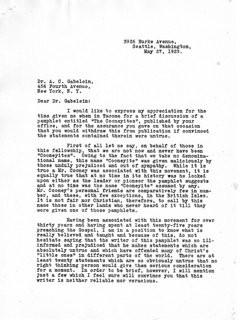 page 1 | 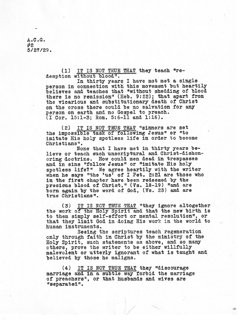 page 2 |
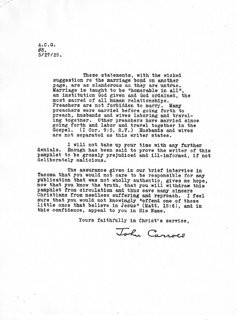 page 3 |
A letter writing campaign was then launched with professing Two by Two lay members attesting to the reliability of Carroll and Hardie and demanding that further distribution of the article in tract form be suppressed. The denials by Carroll and Hardie provoked a flurry of research on the part of Loizeaux Brothers. In followup communications, Carroll made other carefully worded claims. These included seeming suggestions that "doctrines 'most surely believed' and taught by us" endorsed: a) the diety of Christ (though Carroll gives no indication as to how he defined the word "diety", it is known from workers serving under him that this was not accepted in the normal sense of Jesus being God. Other workers have made similar statements appearing to countenance the diety of Jesus, while at the same time specifically denying that He was God); b) that the Scriptures represent the "Word of God" and the "infallible rule of faith and practice" (irrespective of the Two by Two teaching, before and since, that it is necessary that the Bible be "made alive" through the preaching of the Two by Two ministers); c) substitionary atonement through Jesus (again there is no explanation and no indication that his view represents anything like the teaching of other churches on this subject); d) that "the New Birth is an absolute necessity and that this is brought about by the Word of God and the ministry of the Holy Spirit" (to which he adds in the same sentence Two by Twoism's requirements for meetings in the home and the preachers without a home); and finally e) the doctrinal claims of the ministry to "absolutely and literally 'forsake all', own no property of any kind, have no salary, do not lift collections, make no appeals for money to any outside or inside our fellowship" and to having "no headquarters, secretary, treasurer, or central fund.".
According to the account of the worker who accompanied him to a meeting with Loizeaux Brothers (preserved by Doug Parker), the main concern of John Hardie was to quash any suggestion of there being funds being managed on behalf of the work. During this meeting, Hardie affirmed that the only true preachers were those in the Two by Two way, became evasive when questioned about salvation through the blood of Jesus and the result of the meeting was mainly to provoke further interest in uncovering the doctrines of the sect. Further evidence supporting statements made in the article came in from both the publishers' research, and from W.M. Rule himself.
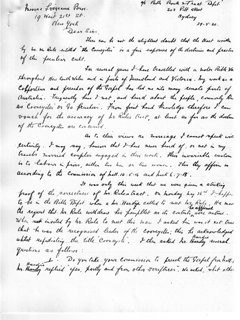 page 1 | 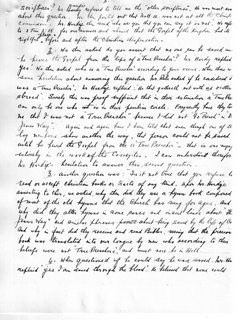 page 2 |
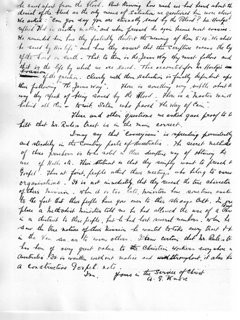 page 3 | 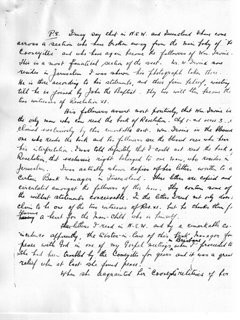 page 4 |
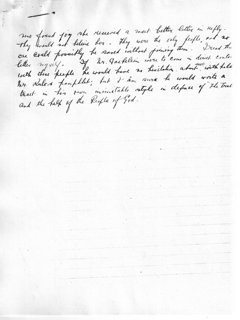 page 5 |
After some brief responses and materials provided from third parties, W.M. Rule gave a more complete response both to explain the statements within the article and to challenge the assertions of Carroll and Hardie as to its accuracy.
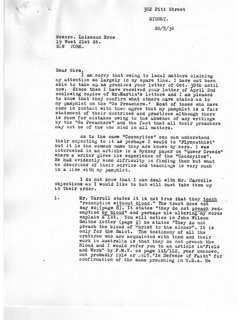 page 1 | 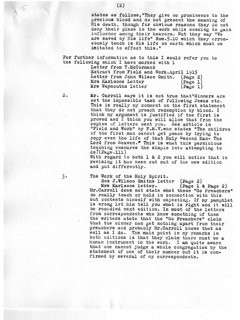 page 2 |
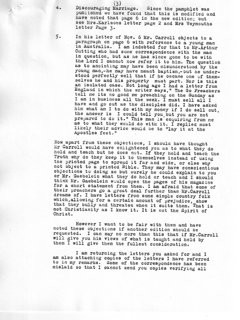 page 3 | 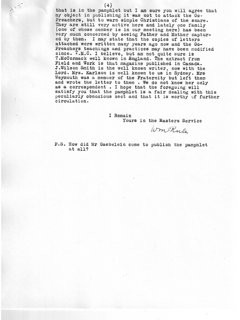 page 4 |
While the attempt to suppress information succeeded in obtaining a very few and very minor adjustments to the article, the deceptive tactics and lobbying only served to confirm statements within the article, and likely ensured its inclusion in the 1929 edition of William C. Irvine's Heresies Exposed, a very popular book that is still in print. John Long, one of the first workers, would later write to correct the full name of the founder used in this book, and the 1935 and subsequent editions include this modification.
This period coincided with a bitter, ongoing conflict between overseers Jack Carroll and George Walker, the continuing influence of the recently expelled Edward Cooney, disagreements over financial handling and other issues. Frustrated by these problems, and the failure to provide satisfactory answers to questions about the history and doctrine or to quash the publications describing the history, teachings and practices of the sect, a meeting of the leadership of the Two by Two movement convened in the village of West Hanney in Oxfordshire (England) in July 1930. As part of a (failed) rapprochement between overseers Jack Carroll and George Walker, a proposal that "the past be buried" was unanimously adopted by the leadership. As previously in the cases of Irvine and Cooney, discussion on such subjects was considered closed and no further mention was to be made. When brought up by others, questions regarding history, doctrine, etc. were addressed in only vague terms, dismissed outright, or actively concealed by deceptive claims (such as: that the sect traced "from the shores of Galilee" or existed "from the beginning" and similar equivocations).
We gratefully acknowledge the efforts of G. Richard Fisher, Ruth Miller, Douglas Parker and others in gathering and collating the materials documenting this incident.
Click Here to Go to the Top of this Page
| Home Page | | Overview | | History | | Articles | | Downloads | | Other Sources | | Books |